3 Knee Stabilization Exercises for Jumpers to Eliminate Pain and Improve Performance
It’s no secret that knee injuries can derail careers. That’s why it’s so baffling to me that coaches are under-read in the areas of knee stability.
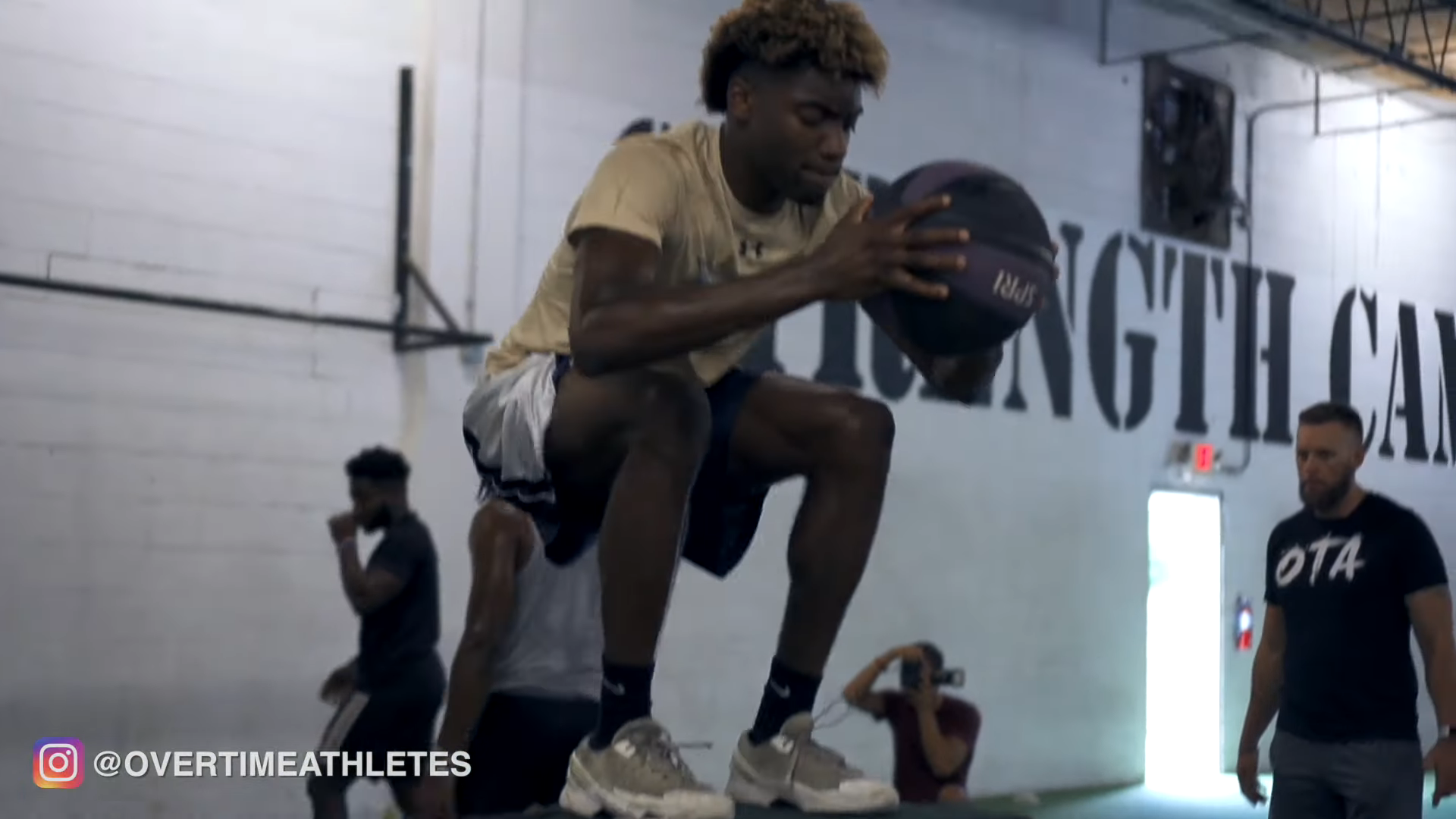
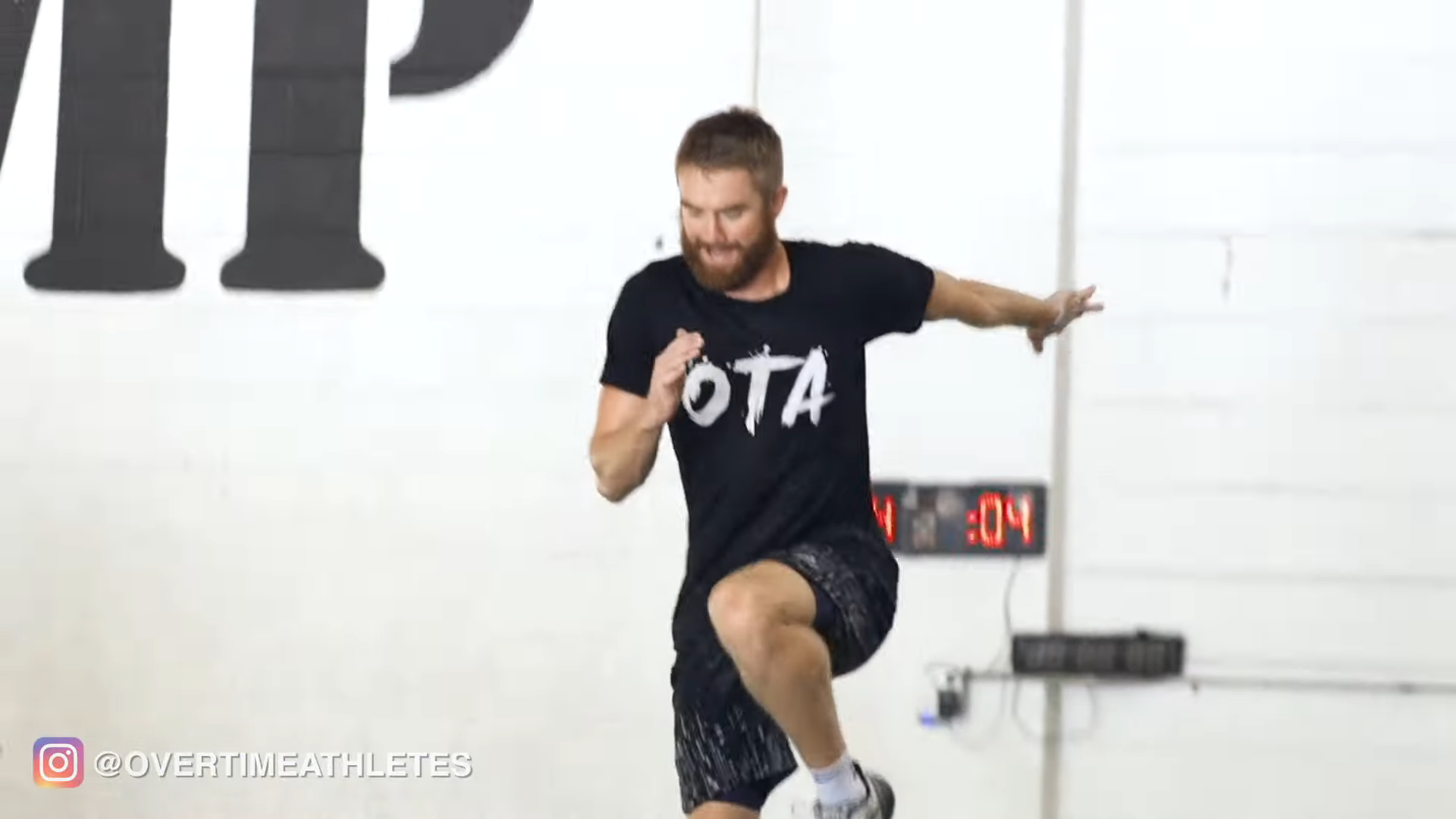
All this said, there’s not enough emphasis placed on knee stabilization.
But, today, I want to share 3 knee stabilization exercises that you can perform in between your sets of plyometrics, squats, and whatever. These will help you build up commonly weak muscles that can create devastating knee problems.
Knee Stabilization Exercise 1: Terminal Knee Extension
I’ve talked about this movement in the past, and it’s a staple in knee stabilization.
For this one, all you’ll need is a cable or a band.
Tie one end of the band around a rack and place the other end around your knee. Step back so there’s a good amount of tension on the band, then simple extend your knee, then slowly flex the knee, letting the band pull it a bit.
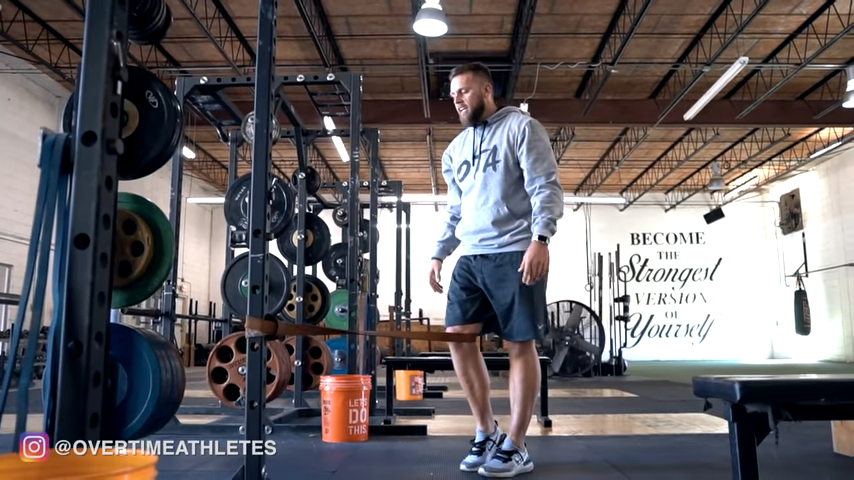
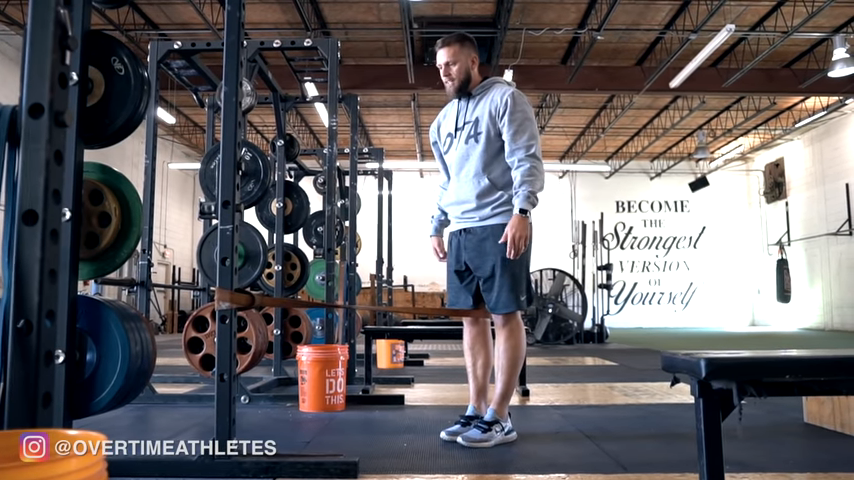
This strengthens the VMO, which is the teardrop muscle in the quad.
It’s under-active in most athletes’ bodies. This movement fires it back up.
Perform this in between sets of squats or plyometrics
Knee Stabilization Exercise 2: Decel Step Ups
This builds the knee’s ability to absorb and withstand high amounts of force, while building up the eccentric strength of the muscles surrounding the knee.
It’s also a great exercise for stability, as it’s essentially a single leg squat.
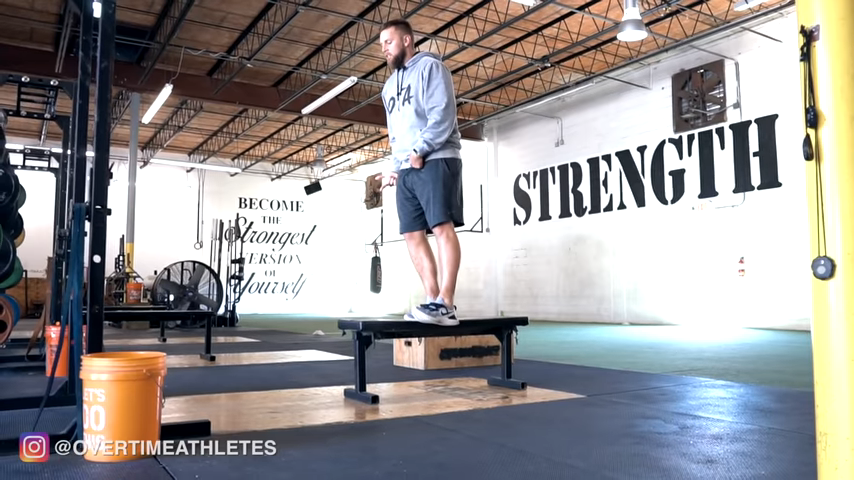
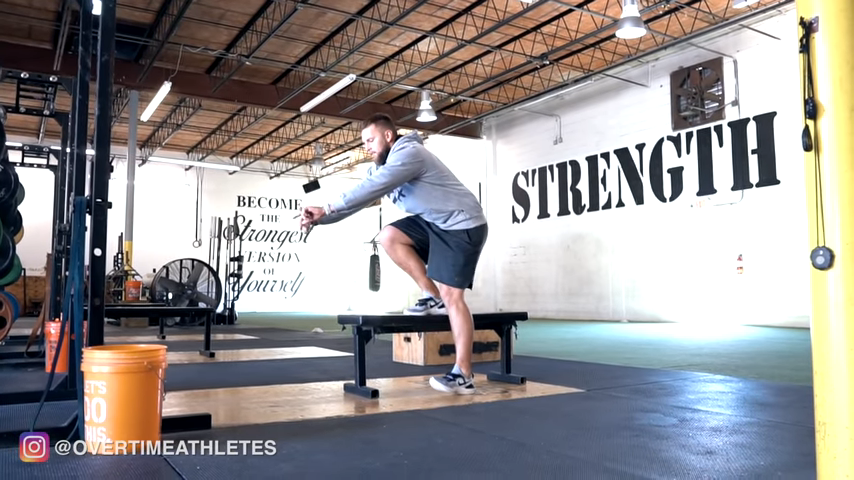
All you’ll need is a bench or box for this one.
Stand with one leg on the bench other leg off. Lower down towards the bench on one leg, keeping the knee out and pushing the hip back. Touch your heel to the ground, then pop up.
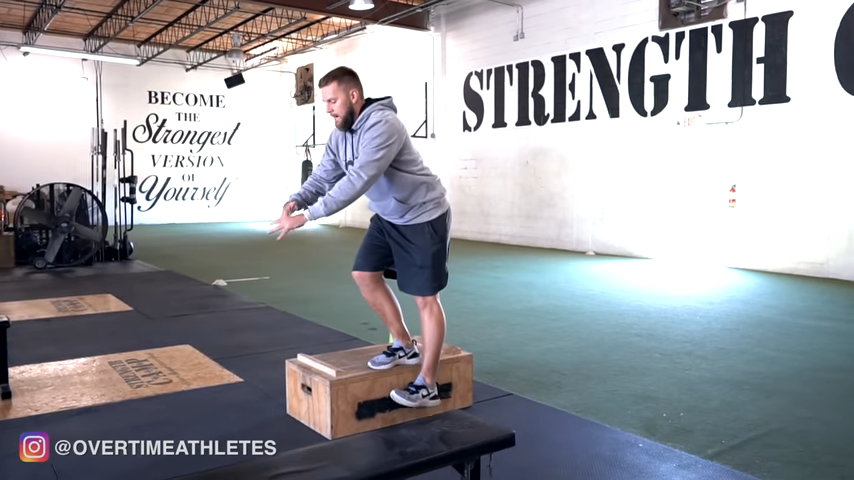
Again, this one will build the strength and stability in the muscles around the knee, and improve it’s ability to withstand force.
Knee Stabilization Exercise 3: VMO Step Downs
This is a knee stabilization exercise I’ve used a lot lately.
As I said above the VMO is an underdeveloped muscle in most athletes. Strengthening it can prevent devastating knee injuries.
For this movement, you’ll need a bench or a box. If you have shorter legs, find something smaller.
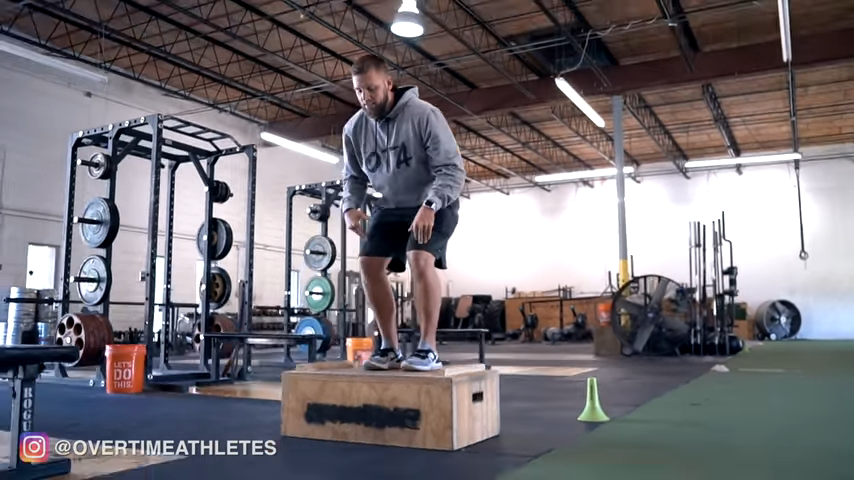
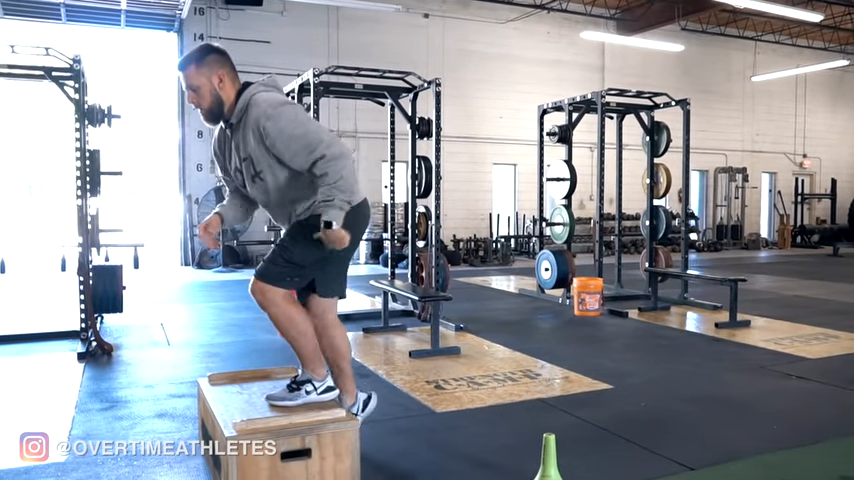
How to Jump Safely
Another big key in jumping and sprinting without risk of knee injury or pain is learning to absorb force.
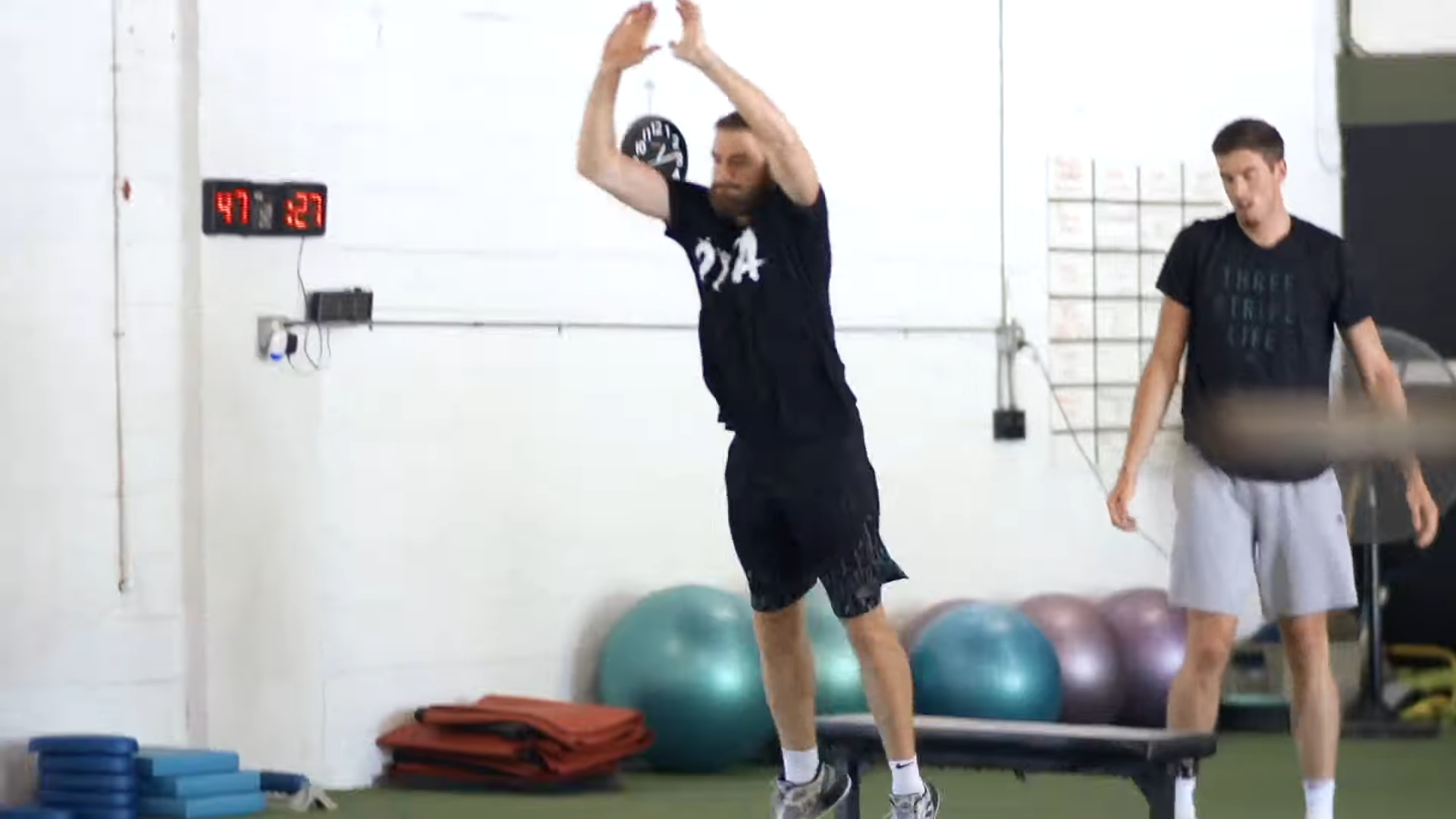
I have two resources to help you learn to do this.
The first is a blog post about Power Training for Basketball Players. Inside, you’ll find a force absorption circuit that can help you raise your absorption capacity.
The second is an Advanced Vertical Jump Series.
Inside, I teach you how to lift for a higher vertical, how to progress your plyometrics, and how to improve your single leg jumping. But, enrollment closes Saturday, July 12th, 2025 at 11:59 PM EST…
Click here to join before time runs out:
Free Advanced Vertical Series (Closing Soon)